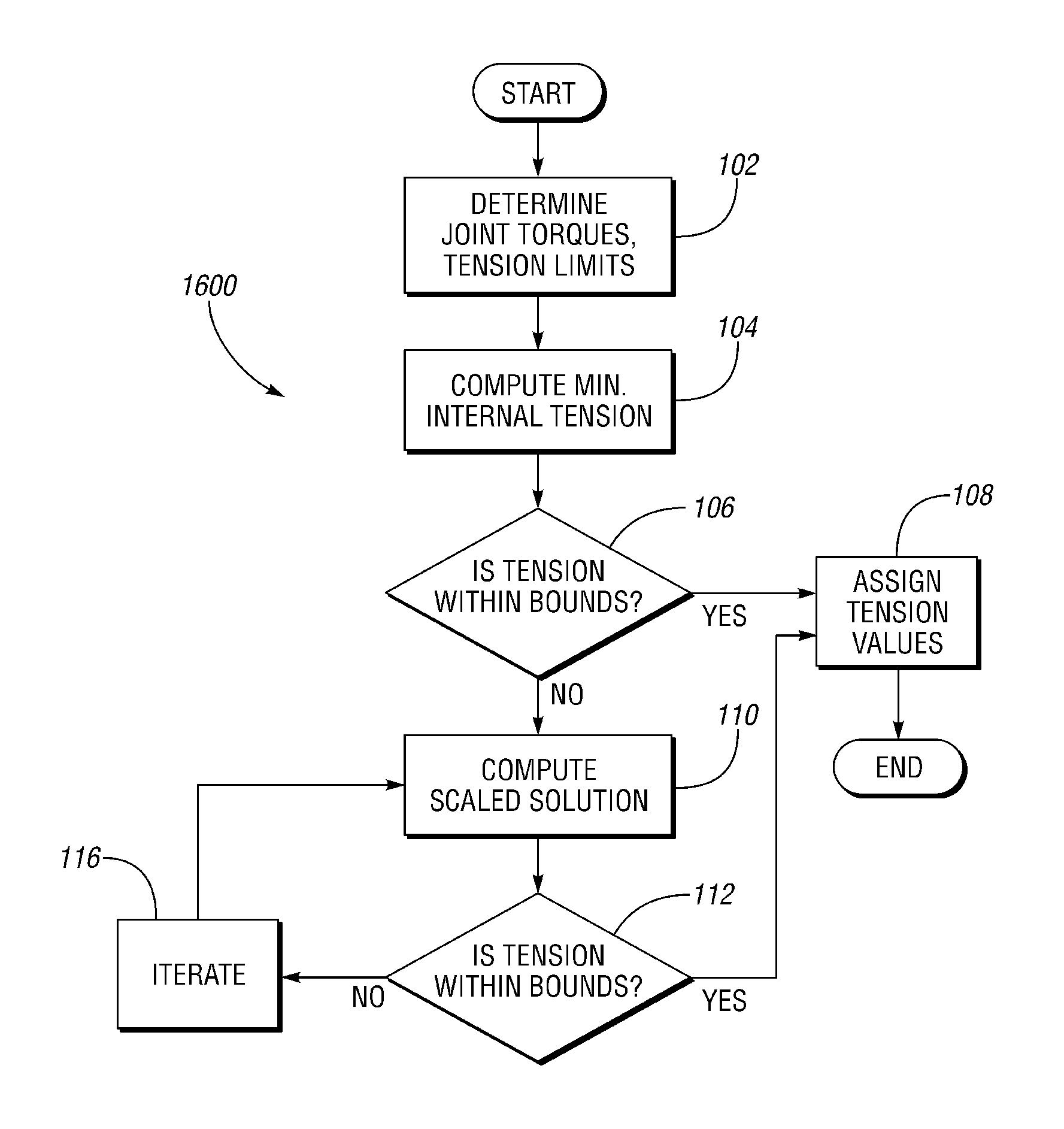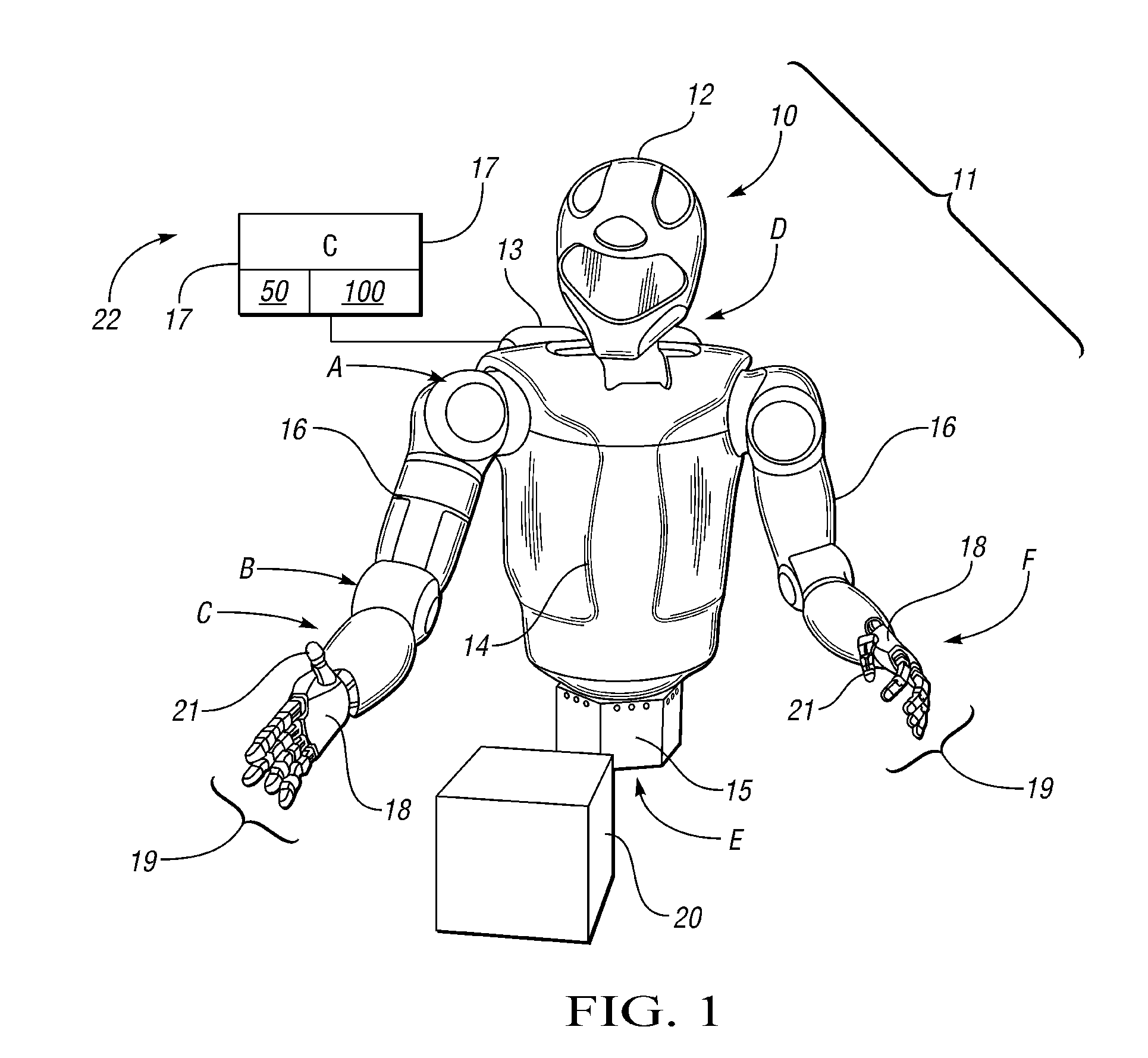Tension distribution in a tendon-driven robotic finger
- Summary
- Abstract
- Description
- Claims
- Application Information
AI Technical Summary
Benefits of technology
Problems solved by technology
Method used
Image
Examples
Embodiment Construction
[0016]Referring to the drawings, wherein like reference numbers refer to the same or similar components throughout the several views, and beginning with FIG. 1, a robotic system 11 is shown having a robot 10, e.g., a dexterous humanoid-type robot as shown or any part thereof, that is controlled via a control system or controller (C) 22. The controller 22 includes an algorithm 100 for controlling one or more tendon-driven fingers 19, as explained below. Controller 22 is electrically connected to the robot 10, and is adapted for controlling the various manipulators of the robot 10, including one or more tendon-driven fingers 19 as described in detail below with reference to FIGS. 2 and 3.
[0017]The robot 10 is adapted to perform one or more automated tasks with multiple degrees of freedom (DOF), and to perform other interactive tasks or control other integrated system components, e.g., clamping, lighting, relays, etc. According to one embodiment, the robot 10 is configured as a humanoi...
PUM
| Property | Measurement | Unit |
|---|---|---|
| Angle | aaaaa | aaaaa |
| Tension | aaaaa | aaaaa |
| Torque | aaaaa | aaaaa |
Abstract
Description
Claims
Application Information
 Login to View More
Login to View More - R&D
- Intellectual Property
- Life Sciences
- Materials
- Tech Scout
- Unparalleled Data Quality
- Higher Quality Content
- 60% Fewer Hallucinations
Browse by: Latest US Patents, China's latest patents, Technical Efficacy Thesaurus, Application Domain, Technology Topic, Popular Technical Reports.
© 2025 PatSnap. All rights reserved.Legal|Privacy policy|Modern Slavery Act Transparency Statement|Sitemap|About US| Contact US: help@patsnap.com



